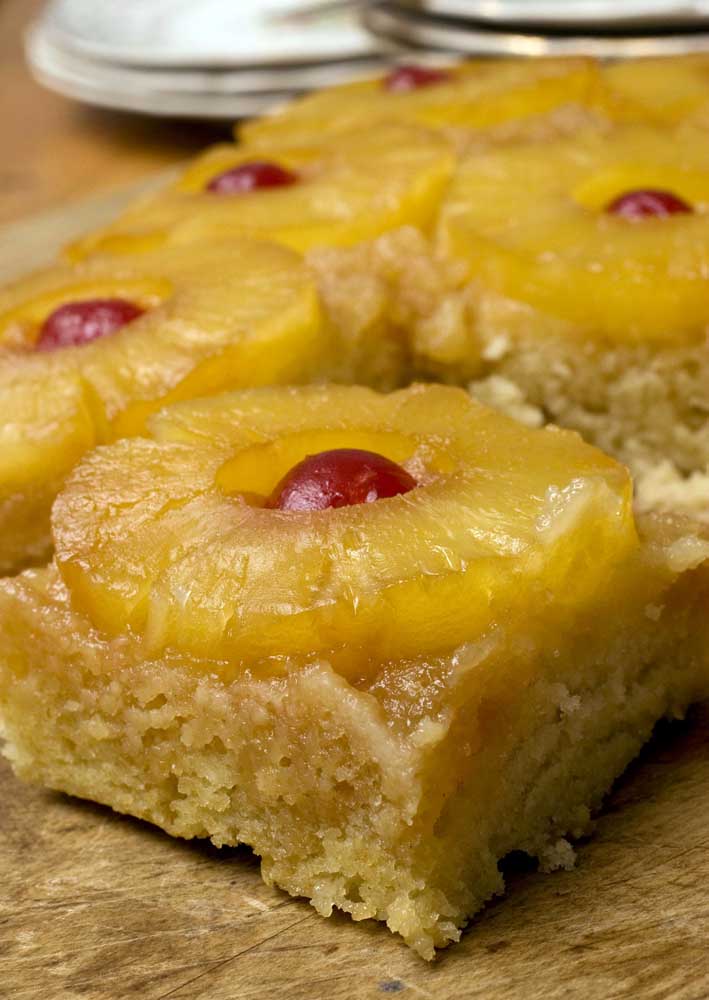Taste U.S. history through flour and sugar
Published 12:00 am Tuesday, December 6, 2016

- Pineapple upside-down cakes originated at the Dole company, in a recipe contest using Dole products.
AUSTIN, Texas — Anne Byrn was always a cake person, long before she made a career out of it.
The Nashville, Tennessee-based author of the “Cake Mix Doctor” books grew up eating scratch-baked cakes, and she went to culinary school in Paris to further hone her pastry skills.
Trending
But when she moved back to the U.S. and became the food editor for the Atlanta Journal-Constitution and, later, the Tennessean, she started using cake mixes that she liked to liven up with a homemade ganache or a nice frosting. In 1998, she wrote a column about doctoring up cake mixes, and it became so popular that it turned into a series of stories. That led to a bestselling book series and a line of her own cake mixes that you can buy in stores today.
It’s been five years since her last “Cake Mix Doctor” book, but her next step forward in cakes was actually one giant historical step back.
In “American Cake: From Colonial Gingerbread to Classic Layer, the Stories and Recipes Behind More Than 125 of Our Best-Loved Cakes” (Rodale Books, $29.99), the author digs deep into America’s archives, including everyday recipe boxes, to find the history behind some of the country’s most popular cakes.
“People don’t know how the cakes began, and it got back to the journalist in me that no one had compiled all those stories to pinpoint what period of time or what region of the country,” she says.
Scholars have explored some of these histories, but Byrn wanted to gather them all in one place and share recipes and polished photos beside them. She knew not every cake would have a definitive answer, but she sought all the information she could find in community cookbooks, newspapers, advertisements and interviews with home bakers.
“It was clear to me that cakes evolved in different regions or a group of people responsible for the cake,” she says. “Old newspapers were the best source. Books might take five to eight years later for that cake to be talked about.”
Trending
Once she pinned down the region, she could explore community cookbooks to bust myths, such as the one about a lazy daisy cake. The common lore had been that it was a 1920s Southern cake, but Byrn uncovered a newspaper clipping from the Chicago Sunday Tribune in 1914 that included a recipe from a woman in Iowa. The phrase “lazy daisy” meant something that was easy to put together, but apparently not only in the South.
“I lived the ’60s, but I didn’t experience the ’30s and ’40s,” she says. “My parents were children of the Depression” when sugar and eggs could be hard to come by. “When I started researching this book, I started falling in love with the hard time cake, the ones you might pass over at a potluck, even though I wasn’t raised on them.”
The early-20th-century applesauce cake, for instance, made without eggs and little to no sugar or butter, was one way home cooks during World War I could feel like they were supporting the war effort. During the Civil War, cooks made boiled raisin cakes, and even during times of peace, cooks gathered nuts from their backyard hickory and walnut trees as an economical way to spice up their layer cakes and fudge.
These cooks were nothing if not resourceful, Byrn says, and this book has only deepened her admiration for their determination to make something sweet, even without sugar or honey or much to celebrate.
Look at all we can learn about shoofly pie, the Pennsylvania Dutch cake baked in a pie crust, just by looking at its ingredients. It’s sweetened with molasses and made without eggs, which means it was a wintertime dessert, Byrn says.
“Hens did not lay eggs in the cooler weather, and molasses would ferment in the summertime heat without refrigeration,” she writes.
The name comes from a brand of molasses, which was likely named for Shoofly the Boxing Mule, a popular circus animal at the time. The ditty “Shoo, fly, don’t bother me” originated in the 1830s, which is where the mule likely got its name.
The shoofly pie, which essentially became a handheld cake because of that crust, helps us see a deeper meaning in the question of pie versus cake.
“There are two sets of people: the pie people and the cake people, and the pie people tended to be people who worked the land, laborers who needed to fix food on the go,” Byrn says. “Cake people had forks and the expertise and the ingredients to make a cake. This culture difference clearly delineated families for many years.”
If Thanksgiving is the pie holiday, Christmas and New Year’s seem to be cake holidays, she says. You could make the claim, she adds, that “if it weren’t for the holidays and cakes associated with the holidays, we might not have preserved these cake recipes.”
“It’s a time that even if you are busy, there’s one cake that you always bake, and so your children are going to bake that cake,” she says. “By baking them every year, we are keeping that long history alive.”
What about modern cakes that look like they were made for Instagram, not for the church potluck? Cakes are getting smaller, more intricate and returning to their seasonality and locality of ingredients.
Byrn has seen frostings get a little more savory because people’s tastes are getting a little less sweet from their peak in the mid-1900s. “It’s very old to use lavender or basil or an herb in baking,” she says. “These new cakes have an old feel to them, maybe because they aren’t frosted at all or contain rhubarb, beets or sweet potatoes.”
Cakes with cider or beer are an old style, too. People baked with the alcohol they were fermenting, and they were fermenting, in part, because they needed the foam that gathered on top to leaven breads and cakes. Cakes played an important part in that closed loop.
The variety of cakes didn’t just come from resourceful home cooks. Many of the variations originated from the companies that sold the ingredients and were hoping a new recipe might entice you to use more of their product. Even a cake like the pineapple upside-down cake, which came out of a Dole recipe contest, has corporate ties.
The intensity of chocolate is very modern, Byrn says. Cocoa used to be enough to satisfy one’s cravings, but thanks to companies such as Hershey, Americans have grown to love cakes so chocolaty that their great-great-great-grandmothers wouldn’t be able to stomach them.
In addition to the historical research, Byrn has made a major contribution to the cake canon by updating these older cakes for modern ingredients and kitchens. One hundred years ago, flour, baking powder, ovens and even eggs were different than they are now, so her adjustments will save countless headaches for home cooks who have tried to make older recipes only to have them fail.
“As you bake your way through the pages of this book, stop to soak in the history and try not to judge the recipes with your modern eyes,” she writes in the introduction.
Imagine what life was like for cooks like Amelia Simmons, who wrote the first American cookbook in 1796, which contained seven recipes for gingerbread.
Byrn explains that women, including Simmons, would make heavily spiced breads and cakes to cover up the taste of crude leavening agents. Gingerbread, in particular, was used to settle upset stomachs and could be baked with success in unforgiving wood-fired ovens.
Those women couldn’t fathom the 10-layer rainbow cakes that pop up in our Instagram feeds today, but their early baking efforts comforted and fed us, just as cakes and other baked goods do now.
“American cake lets us look into the world from which we came and the one we inhabit today,” Byrn writes. “It is synonymous with celebrations and happy times, just as it was when our nation was young.”








